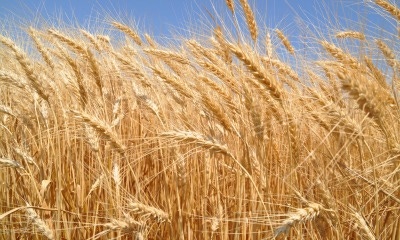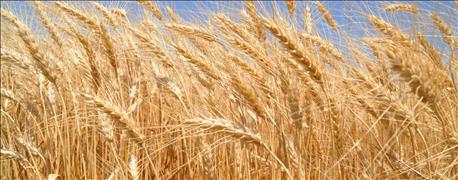
The Kansas Wheat Alliance, the commercialization entity that handles new wheat varieties from Kansas State University, is releasing foundation seed for three new hard red winter wheat varieties to Certified seed producers this fall.
Certified seed is expected to be ready for distribution to farmers for planting in the fall of 2017.
The new varieties are Larry, Zenda and Tatanka.
Larry has good resistance to stripe and stem rust as well as soil borne mosaic virus. It also has good acid soil tolerance but is moderately susceptible to leaf rust. This medium to medium-early maturity variety has shown good yield potential across south central to southwest Kansas and into north central Oklahoma.

Zenda will be an excellent choice for farmers to plant after corn in the eastern half of Kansas. It is a medium-early maturity, and has Everest making up half of its pedigree. Zenda has good resistance to stem rust, moderate resistance to stripe and leaf rust, good acid soil tolerance and soil borne mosaic virus resistance. It will carry a similar level of resistance to fusarium head blight as Everest, but not as good of tolerance to barley yellow dwarf.
It will also make an excellent replacement of Everest for all but extreme western Kansas, southern Nebraksa and northern Oklahoma, excepting the panhandle.
Tatanka is a medium to medium-late maturity variety and is best adapted for western Kansas. It will also do well in eastern Colorado, the panhandle of Oklahoma and extreme southwestern Nebraska. It has a good disease and drought package and will be a strong performer for farmers in this area. Tatanka has shown good resistance to stripe and stem rust as well as moderate resistance to leaf rust. It is also resistant to soil borne mosaic virus which may allow it to come east into central Kansas. It is not recommended for irrigated acres, due to its below average straw strength.
The Kansas Wheat Alliance is able to fund the research and development of new wheat varieties like Larry, Zenda and Tatanka through the royalty collected on the sales of K-State wheat varieties. These royalties provide funding to K-State wheat breeders and their research teams to improve yield and quality.
"Every time a farmer buys Certified seed they are investing in their future. As a non-profit organization, Kansas Wheat Alliance ensures that a high percentage of the royalties go back into wheat research and variety development," said Daryl Strouts, Kansas Wheat Alliance President.
Wheat breeders spend years developing new varieties. In addition to these three new varieties which are now approved for release, K-State has several other experimental varieties that may be ready for release in upcoming years.
"These royalty dollars aren't going to big corporations or a foreign country. They are staying here to ensure Kansas producers continue to have access to the best wheat genetics," said Strouts.
The Kansas Wheat Alliance is a not-for-profit organization formed by wheat producers, researchers, and seed marketers with the goal of maximizing value for wheat farmers by promoting responsible management of new wheat varieties developed by Kansas State University and other wheat-breeding programs. Royalties are used to support wheat research that enhances the profitability of wheat producers.
New from Westbred
Four new hard red winter wheat varieties will be going out for foundation increase to Certified growers this fall and are expected to available to commercial growers for planting in the fall of 2017.
"We are going to really step up the testing, increasing strip trials four-fold to give us a better idea of geographical fit and help us recommend regions and sub-regions where these will perform well for producers," said James Gillum, a spokesman for Westbred.
WB 4551, is a good fit for southeastern Kansas. It has excellent yield, excellent baking quality and protein, an excellent resistance package, good wheat health, and good straw strength.
"It holds its dormancy in the spring, and skips those late freezes we've been seeing," Gillum said.
WB4303, is one that Gillum describes as "kind of racehorse variety," with very high top end yield, well suited for intensive management.
"It does not have the best disease resistance package but it is tolerant of low-pH soils," he said.
WB4303 is ideal for high-fertility soils and high moisture or irrigated acres that are managed with fungicides. In addition to high yields, it has excellent baking quality, milling quality,
WB4721, is ideal for the western High Plains of Kansas, Nebraska and Colorado.
Gillum said it is a lot like the popular variety, Grainfield. It has an excellent disease package, superior straw strength and has been performing well in tests.
"We have it in a series of trials with different growers across the central plains who are testing one or two acres of each variety and it is doing very well comparatively," Gillum said.
WB4462, is also a High Plains adapted variety with great top end yield potential. Its drought tolerance and winter hardiness are similar to Winterhawk, and is an excellent choice for producers in a lmited moisture environment.
Gillum said the Westbred variety that was the most popular this year was Grainfield, which is later maturing, allowing it to miss the late freezes and take advantage of the wet late spring.
Management continues to be an important consideration, with fungicide applications paying big dividends.
"In a season like last year and this year, with the late spring and early summer being wet, you can't rely on the disease package to hold up the full season," Gillum said. "The tolerance will hold through the early season, but getting a fungicide on at about flag leaf to carry you through maturity makes a huge difference in yield."
Watch for details on new varieties coming from Syngenta AgriPro and Limagrain.
About the Author(s)
You May Also Like






